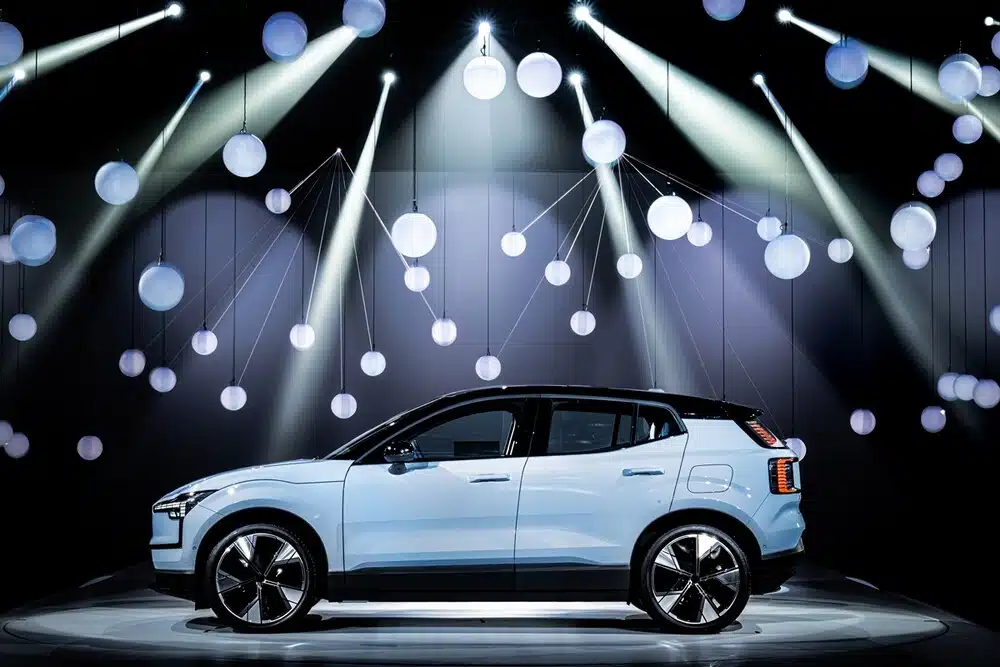With five fully electric vehicles (EVs) already available and another five in development, Volvo Cars continues to prioritize full electrification as a cornerstone of its product strategy. Volvo’s long-term goal remains becoming fully electric and achieving net-zero greenhouse gas emissions by 2040.
While maintaining its leadership in electrification, Volvo Cars has adjusted its ambitions due to evolving market conditions and customer preferences.
Looking ahead, Volvo aims for 90 to 100 percent of its global sales by 2030 to come from electrified vehicles, which will include both fully electric and plug-in hybrid models—all cars with a cord. The remaining 0-10 percent will allow for a small number of mild hybrid models if necessary, replacing the previous target of a fully electric lineup by 2030.
By 2025, Volvo expects electrified vehicles to account for 50 to 60 percent of its sales. Well before the end of the decade, it plans to offer a complete lineup of fully electric cars, positioning the company to transition to full electrification when market conditions permit.
Volvo EV Plans
In the second quarter of 2024, Volvo’s fully electric cars made up 26 percent of sales, the highest share among premium brands, while electrified models, including EVs and plug-in hybrids, represented 48 percent of sales.
Volvo remains committed to its long-term electrification goals, with its investment and product strategies continuing to focus on fully electric vehicles. The adjustments to its plans are not expected to significantly impact capital expenditures.
The company will continue developing its plug-in and mild hybrid models to provide a balanced portfolio, serving as a bridge to a fully electric future.
Since announcing its goal to become fully electric, Volvo has introduced five fully electric models: the EX40, EC40, EX30, EM90, and EX90. The EX30 is currently the third best-selling EV in Europe, according to the latest industry data.
However, challenges such as slower-than-expected growth in charging infrastructure, the removal of government incentives in certain markets, and recent tariffs on EVs have created uncertainties. In response, Volvo emphasizes the need for stronger, more consistent government policies to support electrification.
These strategic adjustments allow Volvo Cars to maintain flexibility, aligning with customer preferences while ensuring business value.
An electric car provides a superior driving experience and increases possibilities for using advanced technologies that improve the overall customer experience. However, it is clear that the transition to electrification will not be linear, and customers and markets are moving at different speeds of adoption. We are pragmatic and flexible, while retaining an industry-leading position on electrification and sustainability.
The compact EX30 SUV continues to perform well, and with the first deliveries of the fully electric Volvo EX90 flagship happening this month, excitement surrounding Volvo Cars’ electric lineup is at an all-time high. The EX90 marks a major technological leap, ushering in a new era for Volvo Cars.
Volvo has also seen rising demand for its plug-in hybrids, with the XC60 emerging as the best-selling plug-in hybrid in Europe this year, according to industry data. Plug-in hybrids offer customers a chance to experience electric driving for those not yet ready or able to transition fully to electric vehicles.
Many Volvo plug-in hybrid owners already drive extensively on zero tailpipe emissions. Recent data from Volvo shows that around half of the distance covered by its latest plug-in hybrids is driven on electric power alone. Volvo Cars plans to continue enhancing its plug-in hybrid models, extending their electric range and increasing their usage, further improving the customer experience.



